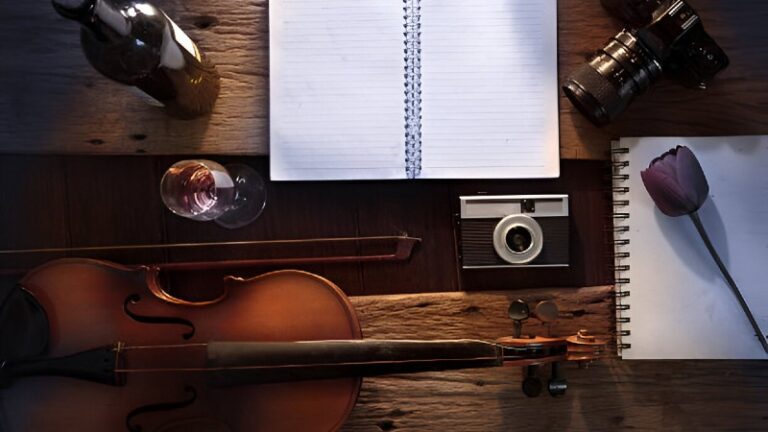History isn’t just a collection of dates and facts it’s a vibrant tapestry woven from human experiences, emotions, and cultural expressions. For millennia, humanity has sought ways to record its journey, ensuring that future generations can understand the triumphs, struggles, and evolution of societies.
These mediums don’t just record they interpret, evoke, and preserve. They allow us to connect with the past on an emotional and visceral level, providing a richer, more authentic understanding of bygone eras than words alone could ever achieve. From cave paintings to digital photographs, the impulse to capture and convey has been a constant in the human story.
Photography as a Historical Lens
Before cameras, artists painstakingly recorded history. Early photographers, despite clunky equipment, aimed to freeze time, offering a new sense of realism. Pioneers like William P. Gottlieb and Herman Leonard captured the vibrant jazz era, creating invaluable visual archives.
Photography quickly evolved, making it easier for everyone to document their lives. This shift, from bulky cameras to today’s smartphones, has turned everyday clicks into potential historical records, democratizing how we capture our world.
Photography’s reach is vast. It’s essential for social record-keeping, preserving personal memories and collective events. In journalism, powerful images can spark social change, like the iconic Napalm Girl that swayed public opinion during the Vietnam War. Even in science, photos document everything from microscopic life to climate change, providing crucial data
Photography’s Diverse Applications in Historical Documentation
The impact of photography stretches across countless domains, solidifying its place as a cornerstone of historical documentation:
- Social Record-Keeping: From family gatherings and school events to global protests, photographs serve as concrete reminders of personal and collective experiences. They become lasting memories, evoking emotions and preserving milestones across generations.
- Journalism and Awareness: Photojournalism, in particular, wields immense power. Images of natural disasters, social inequalities, or political conflicts can transcend language barriers, connect people globally, and ignite significant societal change by bringing critical issues to the forefront. The iconic Napalm Girl photo from the Vietnam War, for instance, became a powerful symbol of civilian suffering, profoundly influencing public opinion.
- Scientific and Environmental Archiving: In scientific research, photography is indispensable for documenting experiments, wildlife behaviors, and environmental changes. Detailed images provide empirical evidence, support findings, and help track critical shifts in our world, from microscopic organisms to the vast expanse of celestial bodies.
Art as a Chronicler
Art was history’s first visual recorder. Ancient paintings and sculptures weren’t just beautiful; they showed daily life, beliefs, and major events. Unlike photography’s objective lens, art offered a subjective view, adding deeper meaning and narrative.
Photography didn’t replace art; it pushed it to new heights. With cameras handling realism, artists explored abstraction and emotion. This led to movements like Impressionism, which ironically drew inspiration from photography’s instantaneous nature. Conversely, modern art influenced photographers to try new, abstract compositions. Art uniquely captures the spirit of an era, reflecting its values and moods.
Evolution of Visual Documentation Mediums
| Era | Primary Medium | Key Characteristics | Role in Documenting History |
| Pre-19th Century | Painting, Sculpture, Drawings | Subjective, interpretive, time-consuming, skilled craftsmanship | Recording events, beliefs, power, daily life, cultural narratives |
| 19th Century | Early Photography | Objective, realistic, technically challenging, freezing time | Documenting individuals, major events, landscapes with precision |
| 20th Century | Mass Photography, Photojournalism | Accessible, widespread, influencing public opinion, narrative-driven | Shaping societal views, exposing issues, personal memory keeping |
| 21st Century | Digital Photography, Social Media | Instant, highly accessible, easily shared, global reach | Real-time global documentation, personal branding, mass communication |
Music’s Unseen Archive
Music might not seem like a direct historical record, but it’s a powerful one. It’s an emotional and auditory archive, reflecting and shaping the social, political, and cultural vibes of its time.
Music often tells stories of historical events, from victory anthems to sorrowful ballads. Folk songs, passed down orally, capture community events and daily struggles, acting as a historical soundtrack. Even new music genres often mark major societal shifts, embodying a generation’s hopes and fears.
How Photography, Art, and Music Intertwine
The true power of these mediums in documenting history lies in their synergy. They often complement and inform one another, creating a multifaceted record.
- Visualizing Music: Music photography vividly captures the energy of live performances, translating the auditory experience into a powerful visual. These images become inseparable from the music itself, defining artist personas and extending their legacy. Album covers, in particular, are iconic examples of art and photography converging to brand and contextualize music.
- Art Inspired by History, Documented by Photography: A powerful painting depicting a historical event might be widely preserved and studied because it was photographically documented and disseminated. Similarly, modern installation art often critiques contemporary social issues, and its transient nature necessitates thorough photographic and videographic documentation for historical record.
- Cultural Preservation: All three mediums contribute to the preservation of cultural heritage. Photography captures traditional dances and festivals, art depicts cultural rituals and symbols, and music transmits folk tales and communal histories. Together, they create a rich, multi-sensory archive for future generations to learn from and appreciate.
Challenges and the Future of Historical Documentation
Despite their immense value, the documentation provided by photography, art, and music faces challenges in the modern era. The sheer volume of digital content today can make historical curation overwhelming. Issues of copyright infringement, the rights grab contracts faced by photographers, and the subjective nature of artistic interpretation require careful consideration to ensure authenticity and fair recognition.
However, the future also holds immense promise. Advanced digital tools offer new ways to archive, categorize, and access vast collections of visual and auditory history. The continued evolution of these mediums, particularly with advancements in immersive technologies, promises even richer and more interactive ways for future generations to connect with and learn from our past.
Conclusion
The enduring role of photography, art, and music in documenting history is undeniable. They are not merely passive recorders but active participants in shaping our understanding of the past. From capturing fleeting moments to interpreting complex societal narratives, these powerful forms of expression offer a vital, multi-dimensional lens through which we can explore the human journey. They connect us to our heritage, evoke empathy, and ensure that the stories of our world, in all their intricate detail and emotional depth, continue to resonate for centuries to come.
Frequently Asked Questions (FAQs)
How does photography contribute to documenting history?
Photography provides objective visual records, capturing specific moments, events, and people, and allowing for widespread dissemination of historical information.
In what ways has art historically documented human experiences?
Historically, art has documented human experiences by depicting daily life, beliefs, power structures, and significant events through subjective interpretation and storytelling.
Can music truly document historical periods?
Yes, music documents history by reflecting the mood and spirit of an era, chronicling events, and serving as an emotional and cultural archive of societal shifts and movements.
How did the invention of photography impact traditional art forms?
Photography’s ability to objectively capture reality freed traditional art forms like painting to explore more abstract, emotional, and conceptual expressions.
Why is documenting history through various mediums important?
Documenting history through diverse mediums like photography, art, and music provides a richer, more multi-dimensional understanding of the past, connecting us emotionally and culturally.
What challenges do modern photographers face in documenting history?
Modern photographers face challenges like copyright infringement, rights grab contracts, and the sheer volume of digital content, making authenticity and curation complex.
How do these mediums work together to document culture?
Photography captures cultural events, art depicts traditions, and music preserves communal histories, collectively forming a comprehensive, multi-sensory record of cultural heritage.


